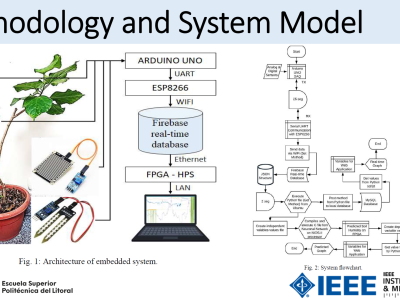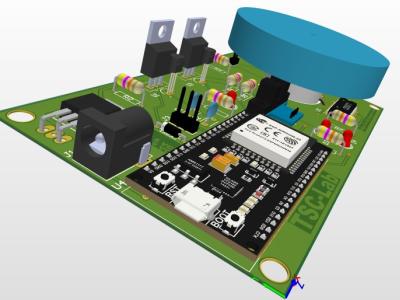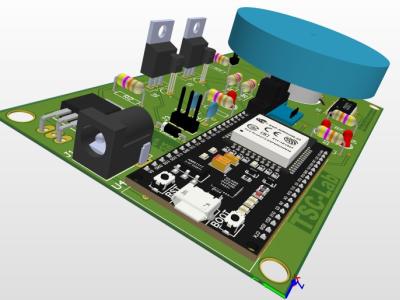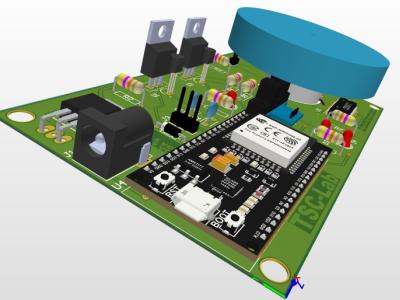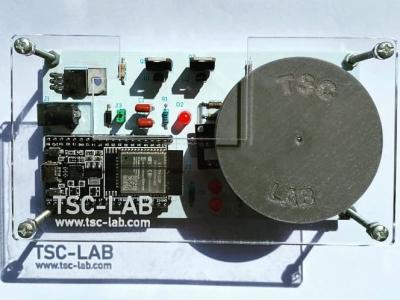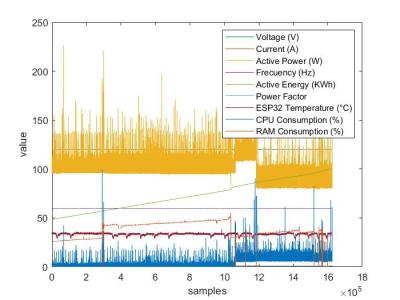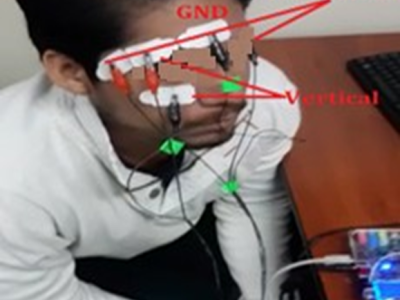Dataset Entries from this Author
⭐ When using this resource, please cite the original publication:
- Categories:
-
This dataset includes the 3-day record (December 6 to December 8, 2020) of a plantation in the city of Guayaquil - Ecuador. This dataset includes the recording of the following variables: Relative Humidity, Environment Temperature, Soil moisture, Light intensity, and Rain Occurrence. An arduino uno module was used to record data, connected to the following sensors:
- Categories:
-
The data acquisition process begins with capturing EEG signals from 20 healthy skilled volunteers who gave their written consent before performing the experiments. Each volunteer was asked to repeat an experiment for 10 times at different frequencies; each experiment was trigger by a visual stimulus.
- Categories:
-
This is an initiative developed by FIEC-ESPOL professors. Temperature and Speed Control Lab (TSC-LAB) is an open source hardware development.
- Categories:
-
Data Competition Entries from this Author
The 2 PHASE ENERGY METER 100A (2PEM-100A) is a power consumption monitor based on an embedded system. In the hope of promoting responsible energy consumption, we have decided to release this open source hardware project that was developed in the course "Development of Electronic Prototypes" at the ESPOL University. The 2PEM-100A allows to monitor the following parameters: Voltage (V), Current (A), Power (W), Frequency (Hz), Energy (KWh), Power Factor and Temperature (°C) of the 2PEM-100A.
- Categories:
-
Open Access Entries from this Author
The Temperature and Speed Control Lab (TSC-Lab) is an application of feedback control with an ESP32, an LED, two heaters, two temperature sensors, one direct current motor and an optical encoder as a revolution per minute (rpm) meter. The heater power output is adjusted to maintain the desired temperature setpoint. Thermal energy from the heater is transferred by conduction, convection, and radiation to the temperature sensor.
- Categories:
-
The Temperature and Speed Control Lab (TSC-Lab) is an application of feedback control with an ESP32, an LED, two heaters, two temperature sensors, one direct current motor and an optical encoder as a revolution per minute (rpm) meter. The heater power output is adjusted to maintain the desired temperature setpoint. Thermal energy from the heater is transferred by conduction, convection, and radiation to the temperature sensor.
- Categories:
-
The Temperature and Speed Control Lab (TSC-Lab) is an application of feedback control with an ESP32, an LED, two heaters, two temperature sensors, one direct current motor and an optical encoder as a revolution per minute (rpm) meter. The heater power output is adjusted to maintain the desired temperature setpoint. Thermal energy from the heater is transferred by conduction, convection, and radiation to the temperature sensor.
- Categories:
-
This repository includes the energy consumption data set of a Data Server that is running in the facilities of the Information Technology Center (CTI) of the Escuela Superior Politécnica del Litoral (ESPOL). In addition, it includes Matlab scripts to perform the prediction of energy consumption. The data acquisition equipment was implemented in the Electronic Prototype Development Matter of the Faculty of Electrical Engineering and Computing (FIEC), based on the ESP32 hardware.
- Categories:
-
The electrodes are sensors capable of reading EMG signals or ocular myoelectric activity during eye movements [1]. For this purpose, two vertical electrodes and two horizontal electrodes were used, with a reference electrode on the forehead (See the figure). 10 subjects performed 10 pseudo-random repetitions of each of the following eye movements during the experiment: Up, Down, Right, Left, no movement (fixation in the center) and blinking.
- Categories:
-
